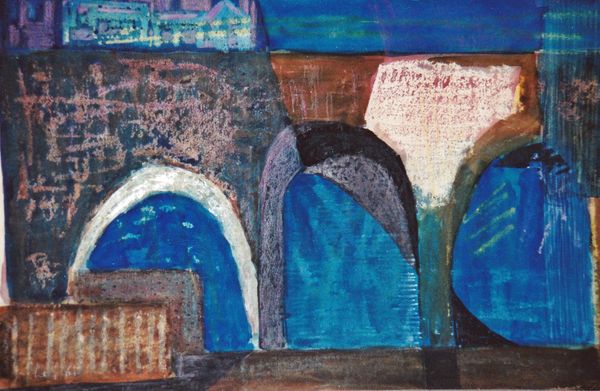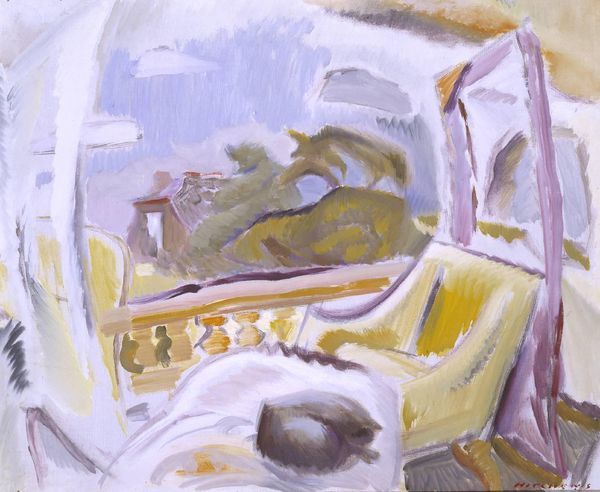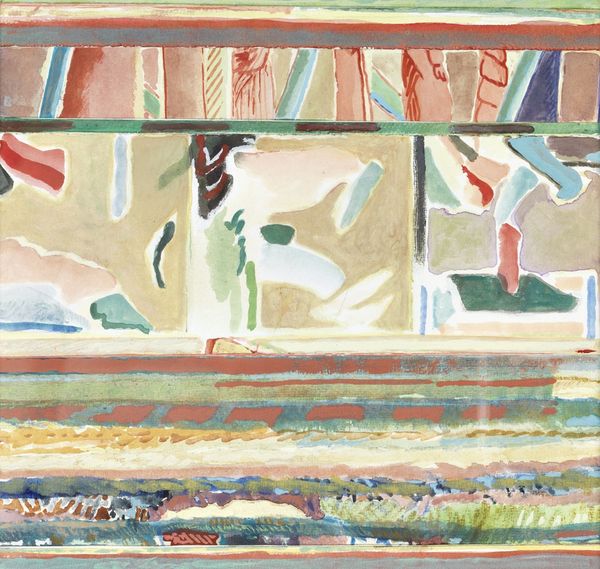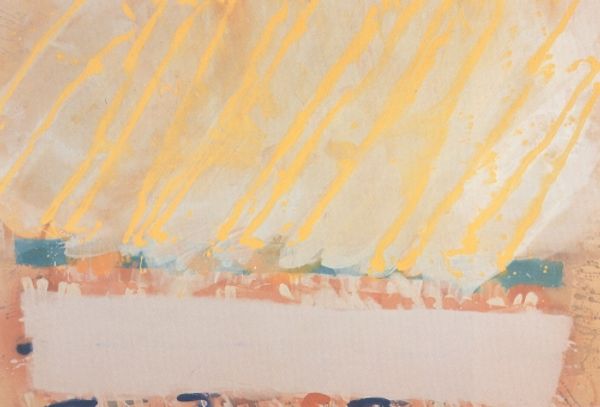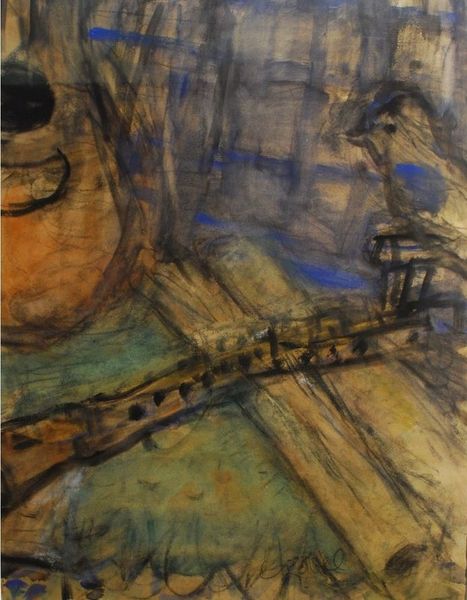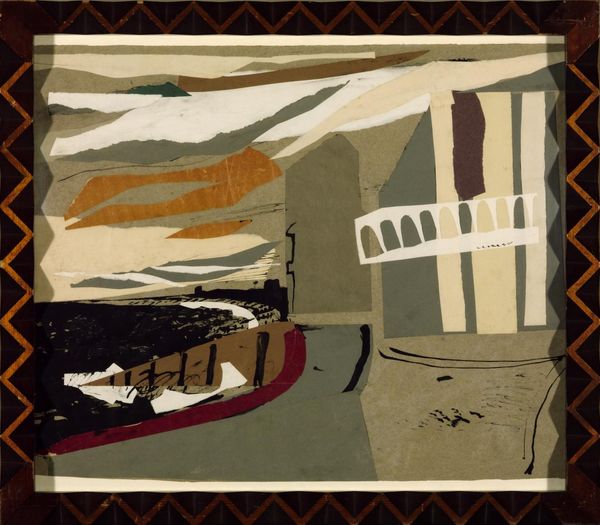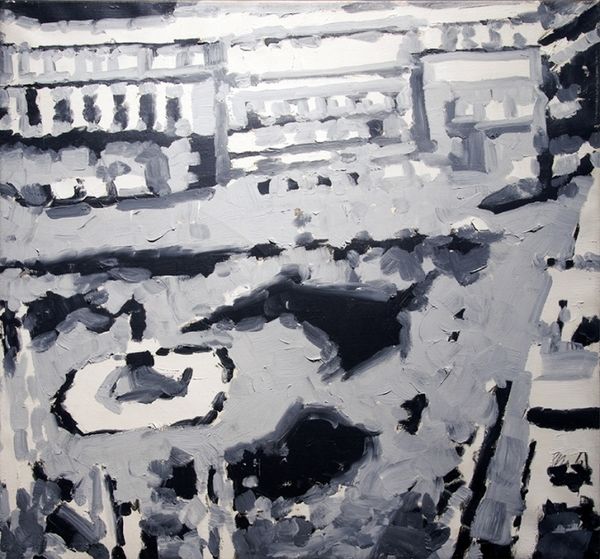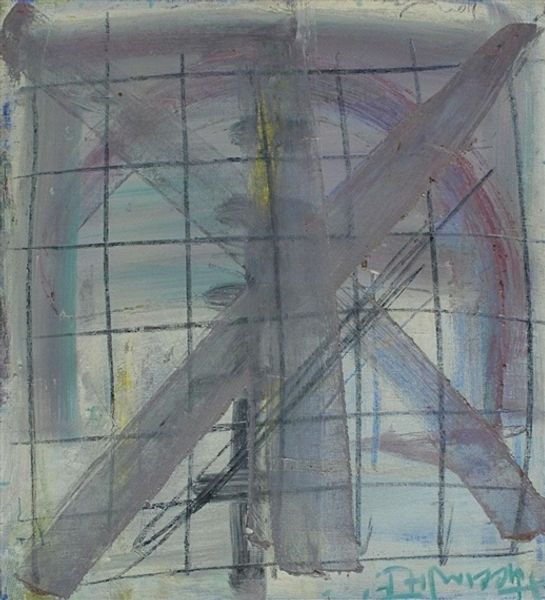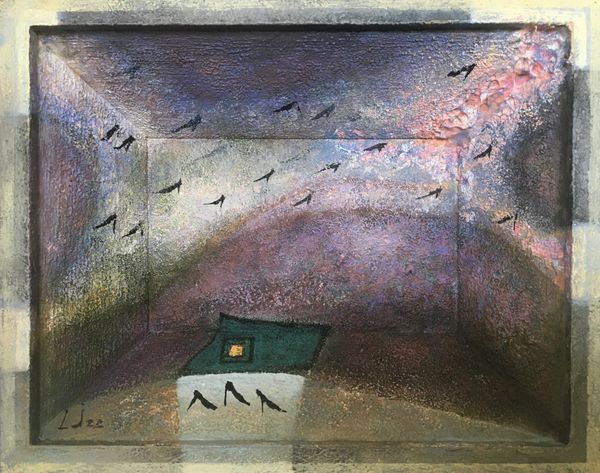
painting, watercolor
#
painting
#
landscape
#
oil painting
#
watercolor
#
genre-painting
#
modernism
#
watercolor
Copyright: Public domain
Editor: Eric Ravilious's "Train Landscape" from 1940, rendered in watercolor, offers this incredibly intimate view from inside a train carriage looking out at the English countryside. I’m struck by the juxtaposition of the patterned interior and the pastoral scene beyond. What social commentary might Ravilious be offering with this work? Curator: Ravilious, working during a time of immense social change, uses this train interior as a framing device, a literal window onto a changing England. Consider the historical context: the looming war, the changing landscape due to industrialization and infrastructure development. This artwork speaks to anxieties about progress and preservation of national identity. Notice the white horse chalk figure—an ancient symbol juxtaposed with the modern mode of transport. What does that juxtaposition suggest to you? Editor: It feels almost like a lament for the past seen through the lens of progress. A slight tension arises from that visual dialogue. Were railways seen as a destructive force back then? Curator: Certainly, anxieties existed. Railways reshaped communities, disturbed traditional ways of life. Ravilious doesn't necessarily condemn progress, but presents a complex picture. The “3” on the door could indicate the third-class carriage, which forces us to question who exactly benefits from this so called progress. How might different viewers respond depending on their class or experience? Editor: That's a fantastic point. It really highlights the politics embedded within the imagery. I guess a first-class passenger might see a completely different symbolism at play here. I am seeing something new in this! Curator: Exactly! And art history encourages that continuous questioning. The act of seeing becomes an act of historical inquiry. Editor: I’ve definitely learned a lot today; considering art as a social document gives it so much more depth! Curator: Indeed. Now, when you look at other artworks, you'll have another analytical tool in your kit.
Comments
No comments
Be the first to comment and join the conversation on the ultimate creative platform.

